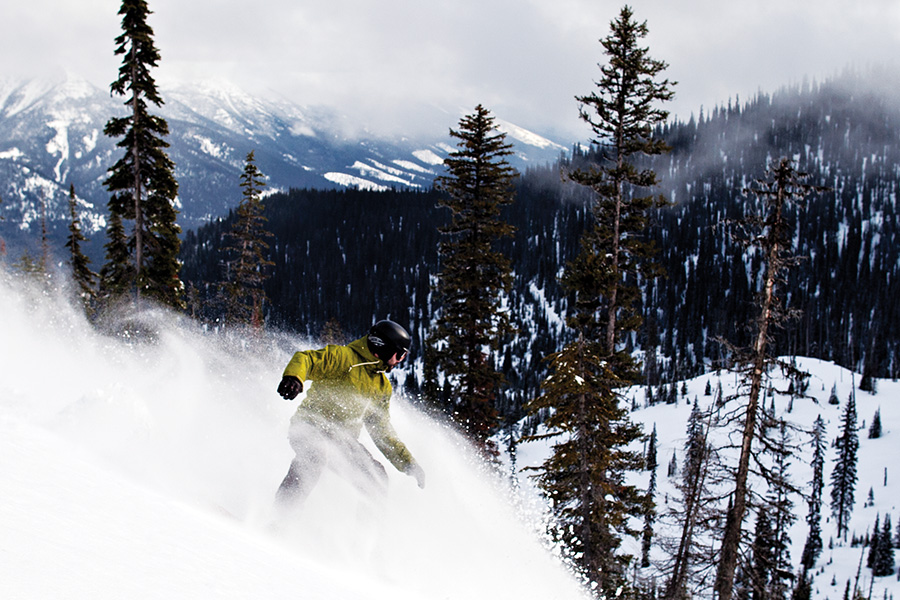After the chairlifts quit spinning in Montana and across the nation earlier this month in an effort to reduce the spread of coronavirus, Flathead Avalanche Center forecasters have noticed an uptick in backcountry usage locally, which could cause additional hazards.
A week after Whitefish Mountain Resort announced its early closing day on March 15, Flathead Avalanche Center Director Zach Guy observed unusually busy backcountry crowds, with 10 to 12 cars at trailheads that usually only see two or three. He also noticed an influx in snowmobile trailers parked along North Fork Road.
“Last weekend was the busiest I have ever seen the backcountry,” Guy said.
Guy says the increased usage has been a problem in places like Utah and Colorado, which have denser populations, where people are congregating in masses and not following social-distancing policies.
Even when recreationists follow the six-feet-apart rule, Guy says backcountry users need to be especially careful to avoid injuries that could result in a trip to the hospital.
On March 24, a snowboarder in Colorado triggered an avalanche resulting in a helicopter evacuation requiring “a large number of rescue team members,” according to a statement issued by the American Avalanche Association (AAA) through their Facebook page.
“It doesn’t matter if you have the proper avalanche related equipment, rescue skills, medical skills and self-evacuation skills,” said AAA President Halsted Morris in the statement. “If you happen to get hurt you’ll be taking up critical hospital space, and you could end up with (COVID-19). Let’s work together to avoid putting Search and Rescue and responders at risk.”
On March 26, Gov. Steve Bullock issued a stay-at-home directive, and while outdoor activity is allowed, the order discourages “outdoor recreation activities that pose enhanced risk of injury or could otherwise stress the ability of local responders to address the COVID-19 emergency,” which includes “backcountry skiing in a manner inconsistent with avalanche recommendations or in closed terrain.”
Although avalanche conditions have been rated “Low” and “Moderate” in recent weeks in the Flathead Avalanche Center’s region, Guy said a small avalanche slide carried a skier resulting in minor injuries in mid-March.
“There’s an increased pressure and stress on the health system, and we’re encouraging people to behave responsibly and take extra care to avoid an injury that could send you to the ER,” Guy said.
Early resort closures could also attract inexperienced and uneducated backcountry recreationists, creating avalanche safety hazards in environments they are unfamiliar with. While difficult access to terrain in the Flathead deters most inexperienced recreationists, Guy says it’s important to consider the potential dangers that new users could impose on safety.
“For inexperienced users, that may mean postponing your start to backcountry recreation until classes are offered next fall,” he said.
The Flathead Avalanche Center plans to continue producing daily forecasts in the Whitefish, Swan and Flathead Ranges through their end-of-season date on April 5. Forecasters have suspended operations in Glacier National Park due to its closure. Areas out of operation include the Apgar Range, the Lake McDonald area and the John F. Stevens Canyon area north of Highway 2. The center reminds backcountry users to practice extra caution, follow the Centers for Disease Control and Prevention social-distancing guidelines and check www.flatheadavalanche.org for current conditions.
“As always, we encourage you to get the gear, get the training, get the forecast, and stay out of harm’s way,” Guy said.
